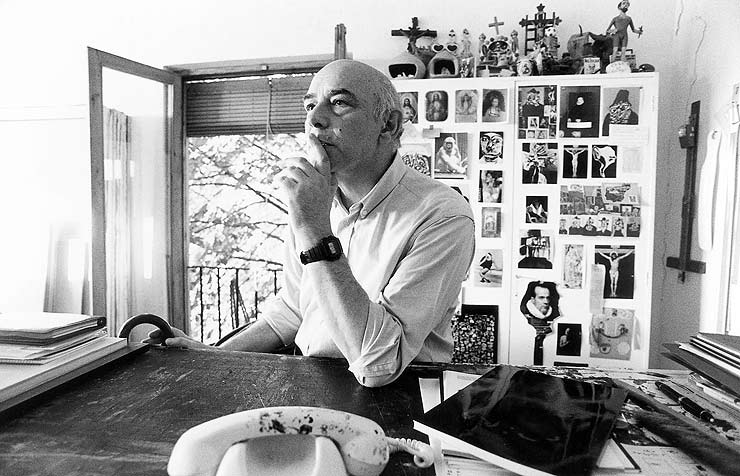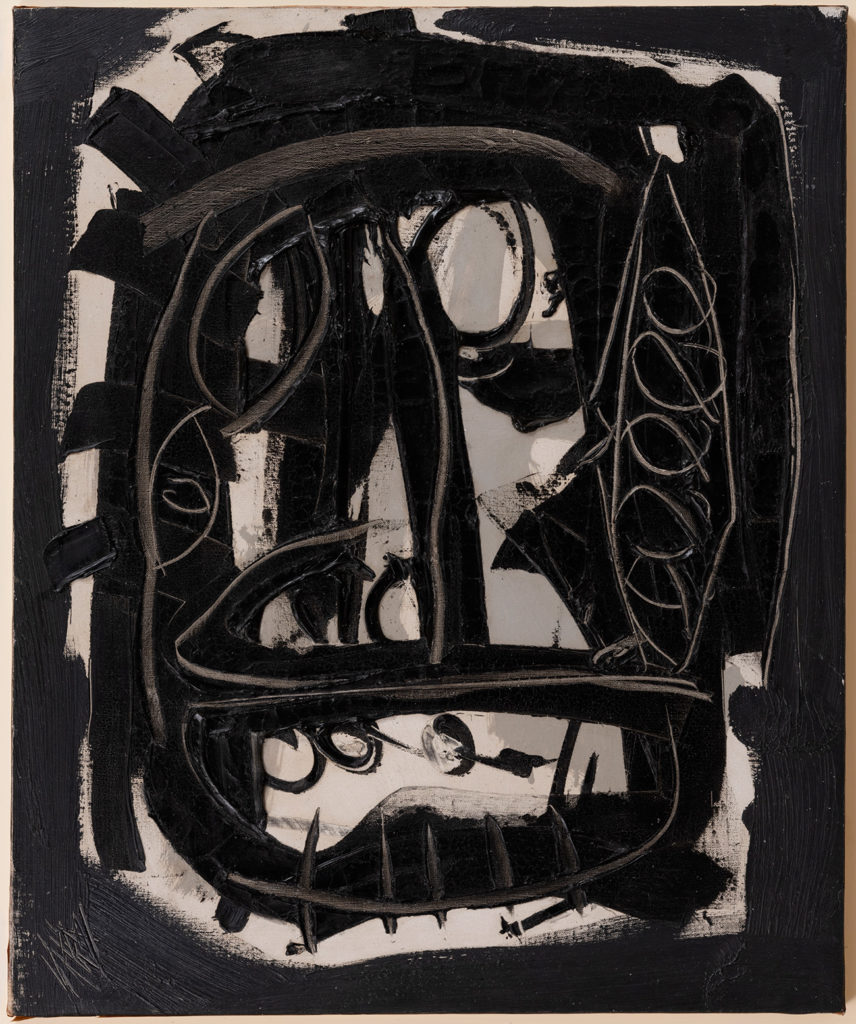Antonio Saura: expressionist tradition from the Vanguard
ACCESS TO AUCTION
The importance of Antonio Saura in the renewal of Spanish post-war art is clearly unquestionable. Consolidated as one of the great introducers of abstraction in Spain, Saura is also one of the greatest followers of the Expressionist artistic tradition. In addition to the inescapable influence of North American Abstract Expressionism and French Informalism, the tragic substratum that invades each and every one of his works hides numerous references rooted both to the brave vein of Spanish painting and to European Nordic Expressionism.
In fact, some of his most emblematic series such as imaginary faces or crowds draw directly from some of the most significant artists who anticipated and raised Expressionist aesthetics and philosophy to the top . In this sense, Saura’s plastic universe finds in the human figure one of the essential axes of a vast trajectory in which we will see countless mutilated and distressed aberrant characters parading that in line with that of his admired Goya Munch or Ensor, we they show the monstrous side that resides in every being.
Since the first head appeared in his paintings in 56, it became one of his hallmarks, completely conditioning the entire development of his own universe full of eyes, faces, signs and violent lines that become a true catalog of the obsessions, passions and fears that Saura faced, with brutal honesty. Their deconstructed or variegated heads, fused in a gloomy atmosphere reduced to black and white hues, have their roots in Goya’s Black Paintings and in Munch’s frightened characters, who, ahead of their time and analyzing their own respectively, showed reality. of a century that would go down in history as the century of horror. In a continuous process of construction and destruction that defines the image, Saura took up the witness of both artists, representing the alienation of the human being in faces that diluted and mutilated among the mass (Multitudes series) or drowned in a lonely cry (series portraits imaginary) become both victim and executioner of the disasters that occurred throughout the twentieth century
In this sense, Goya, considered by many to be the creator of modernity, left an indelible mark on artists who, like Saura, released the monsters that reside within us and their own in their paintings. Underlying the informalist gesture of the Aragonese painter is that expressive force with which Goya portrayed the reality of the world and the human being with his lights and shadows, in an overwhelming story that anticipated his time to denounce the barbarism in which the world was immersed. humanity. From this point of view the crowds, the imaginary portraits and the screams of Saura are presented as updates, by the artist from Fuentetodos, exposing that brave streak already begun in the Baroque that one of its greatest exponents finds in Goya. In this regard, Saura establishes an analogy between this feature of Goya painting and the gestures of abstract expressionism that, becoming a symbol of freedom, allows the artist to confront himself with painting -as Goya did- without ties or impostures.
Following tradition, Saura turned his gaze towards Nordic expressionism led by artists who, like Munch or Ensor, acted as a common thread between Goya’s work and that of Saura himself. The Norwegian artist stands as a fundamental pillar in the expressive culmination of Saura through anguished crowds that, as in Munch’s work, represent the insurmountable abyss towards which humanity is headed. Their faces stripped of any characteristic of their own that differentiates them. corrupted an individual identity that is now subjected to a terrifying and grotesque submissive mass among which the monster looms: a monster in which, as in Goya’s work, the only hint of humanity is reflected in the representation of the eyes
In short, the monstrous characters, both Goya and Munch and Saura, shout the same lesson: if they take away our identity, they take away everything, even our humanity. This is the great learning that Goya, in his lucid and torn vision of humanity, brought to modern art. Because the human condition is implicit in the condition of a monster, two sides of the same coin that in the 20th century became an incontestable truth that Goya anticipated and in which Saura projected the stark reality of a world in decline.
From Setdart, we do not want to miss the opportunity to claim, disseminate and value the immense artistic value of the legacy that one of the great painters of post-war art gave us. .
.





